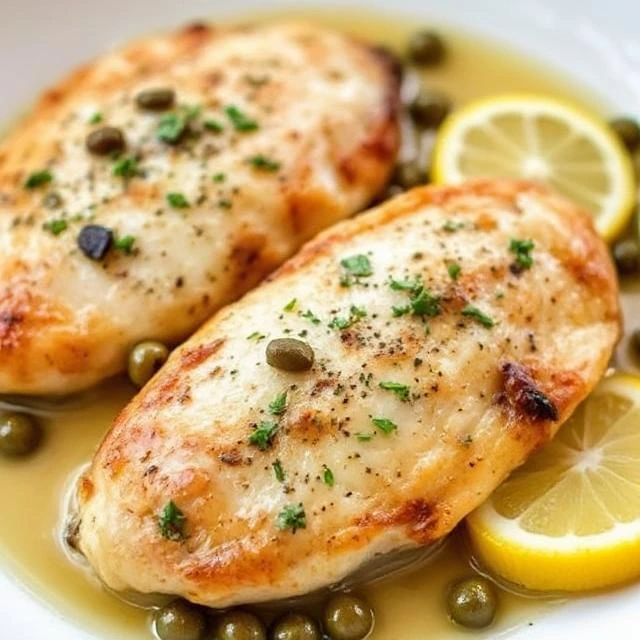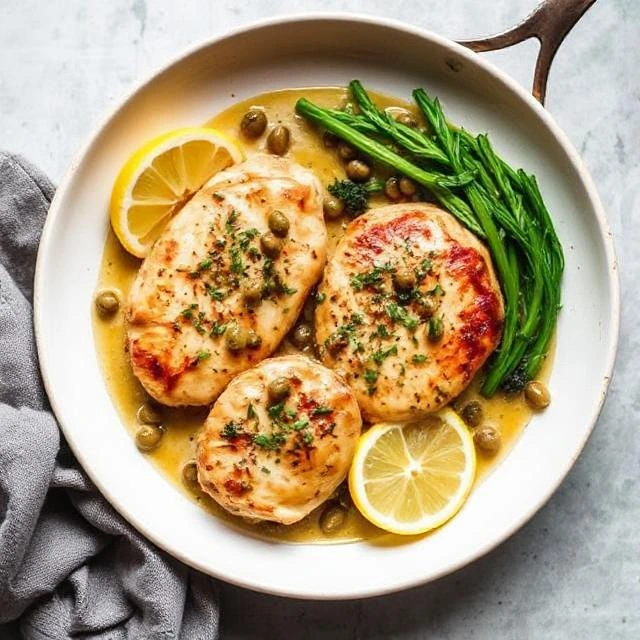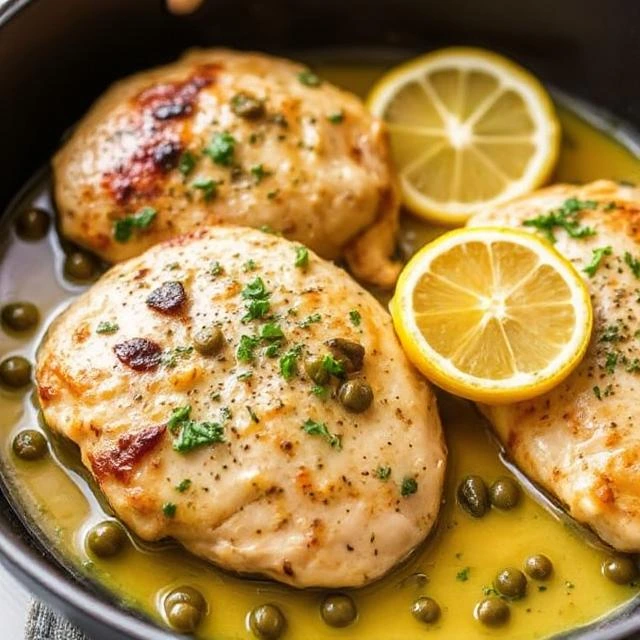Introduction
Chicken Piccata is a timeless Italian-American dish that embodies simplicity and sophistication. With its golden, pan-seared chicken cutlets bathed in a tangy lemon-butter sauce studded with briny capers, this dish has become a staple in home kitchens and fine-dining menus alike. In this comprehensive guide, we’ll explore the origins of Chicken Piccata, break down its key ingredients, and walk you through a foolproof recipe. Along the way, we’ll share expert tips, creative variations, and SEO-optimized insights to help you master this culinary classic.
The Origins of Chicken Piccata
Chicken Piccata (or Pollo alla Piccata in Italian) is believed to have roots in Northern Italy, where capers and citrus are frequently used to brighten rich dishes. The term “piccata” refers to meat that’s sliced, sautéed, and served in a sauce—a technique popular in Milanese cuisine. While the dish has evolved in America, its essence remains tied to Italian culinary traditions.http://The History of Italian Cuisine
Why Chicken Piccata Stands Out
What makes Chicken Piccata unforgettable? It’s all about balance:
- Lemon: Adds zesty brightness.
- Capers: Provide salty, floral depth.
- Butter: Creates a velvety sauce.
- Pan-searing: Delivers crispy edges and tender meat.
Pair it with pasta, mashed potatoes, or crusty bread to soak up the sauce. Looking for more Italian-inspired pairings? Try our Creamy Garlic Parmesan Risotto ).

Key Ingredients for Authentic Chicken Piccata
Here’s what you’ll need for 4 servings:
- Chicken breasts (boneless, skinless, pounded thin).
- Flour (for dredging).
- Butter and olive oil (for richness and searing).
- Garlic (minced).
- Lemon juice and zest (fresh is essential!).
- Capers (rinsed to reduce saltiness).
- White wine (optional, but recommended for depth).
- Fresh parsley (for garnish).
Pro Tip: Substitute chicken with veal for traditional Veal Piccata, or use tofu for a vegetarian twist.

Step-by-Step Recipe: Classic Chicken Piccata
1. Prep the Chicken
- Pound chicken breasts to ¼-inch thickness.
- Season with salt, pepper, and dredge in flour.
2. Pan-Sear to Perfection
- Heat olive oil and butter in a skillet.
- Cook chicken 3-4 minutes per side until golden. Set aside.
3. Build the Sauce
- Sauté garlic in the same pan.
- Deglaze with white wine (or chicken broth), scraping up browned bits.
- Stir in lemon juice, capers, and butter. Simmer until glossy.
4. Finish and Serve
- Return chicken to the pan, coating it in the sauce.
- Garnish with parsley and lemon slices.
Expert Tips for Success
- Don’t overcrowd the pan: Cook chicken in batches to avoid steaming.
- Balance acidity: Taste the sauce and adjust lemon or butter as needed.
- Use high heat: Achieve a crispy sear without overcooking the meat.
For more pan-searing tips, check out The Science of Searing Meat
Modern Twists on Chicken Piccata
While the classic recipe is unbeatable, these variations keep things exciting:
- Piccata with Artichokes: Add marinated artichoke hearts for a Mediterranean flair.
- Creamy Piccata: Stir in a splash of heavy cream for richness.
- Keto-Friendly: Swap flour for almond flour and omit wine.
Discover more Italian-inspired dishes like Chicken Marsala

Serving and Storing Tips
- Pairing: A crisp Pinot Grigio or Sauvignon Blanc complements the lemony sauce.
- Storage: Refrigerate leftovers for up to 3 days. Reheat gently to avoid curdling the sauce.
FAQs About Chicken Piccata
Q: Can I use chicken thighs instead of breasts?
A: Yes! Thighs are juicier but may require longer cooking.
Q: Are capers necessary?
A: They add signature brininess, but olives or pickled onions can substitute.
Q: How do I prevent the sauce from breaking?
A: Keep heat moderate and emulsify with cold butter at the end.
Conclusion
Chicken Piccata is a dish that marries simplicity with bold flavors, making it perfect for weeknights or entertaining. By mastering the balance of lemon, butter, and capers, you’ll create a restaurant-worthy meal at home. Whether you stick to tradition or experiment with modern twists, this recipe is sure to become a favorite.
Craving more Italian classics? Dive into our Ultimate Guide to Italian Cooking
I don’t think the title of your article matches the content lol. Just kidding, mainly because I had some doubts after reading the article.